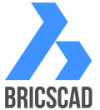Lisp Benchmarks : AutoCAD, BricsCAD & ZWCAD+
Bangalore, India
Torsten Moses of Bricsys has created some great Lisp performance evaluation programs for use in .dwg CAD platforms supporting the Lisp API interface.

This Lisp Benchmark system has been developed to provide a performance test system to compare several CAD systems with their (more or less) AutoLISP compatible Lisp engines.
The main purpose of this benchmark is to test the performance of native AutoLISP functions – these are usually named as “low-level” tests. More than 280 of such tests are included, covering virtually all Standard Lisp functions, as well as all VL Lisp functions, all VLAX functions, and some VLA functions.
Additionally, a number of “Application Benchmarks” are included – such tests measure the performance of “application-like” code, usually names as “high-level” tests
Today, I ran these test programs on a demo computer that had AutoCAD 2013, BricsCAD V13 and ZWCAD+ 2012 installed.
Here are the test results:
Test Description AutoCAD BricsCAD ZWCAD+
Standard Lisp functions 412.8 192.5 1206.3
VLAX-functions 178.6 30.4 234.2
User APPS benchmark * 44.1 9.5 56.7
Figures shown above represent the number of seconds taken to complete the benchmark.
Click on the values to view a detailed report of the test.
* – The User APPS benchmark used some of the GeoTools routines as its test data.
From the tests, it is clearly evident that Lisp performance is best in BricsCAD, by a huge factor over both AutoCAD and ZWCAD+.

In other words, BricsCAD Lisp is, on an average, 4-6 times faster than AutoCAD Lisp, and about 6-10 times faster than ZWCAD+ Lisp engine.
Unlike the other .dwg based systems, the Lisp engine and API in BricsCAD is constantly worked upon, growing and optimized for performance.
This is perhaps one of the reasons why you see so many third-party apps successfully ported and running on BricsCAD compared to the other alternative .dwg CAD platforms available today.
You can run these benchmark tests and compare the Lisp performance on your computers. The procedure is easy and documented clearly in the Readme.txt file.
Download the benchmark here.
